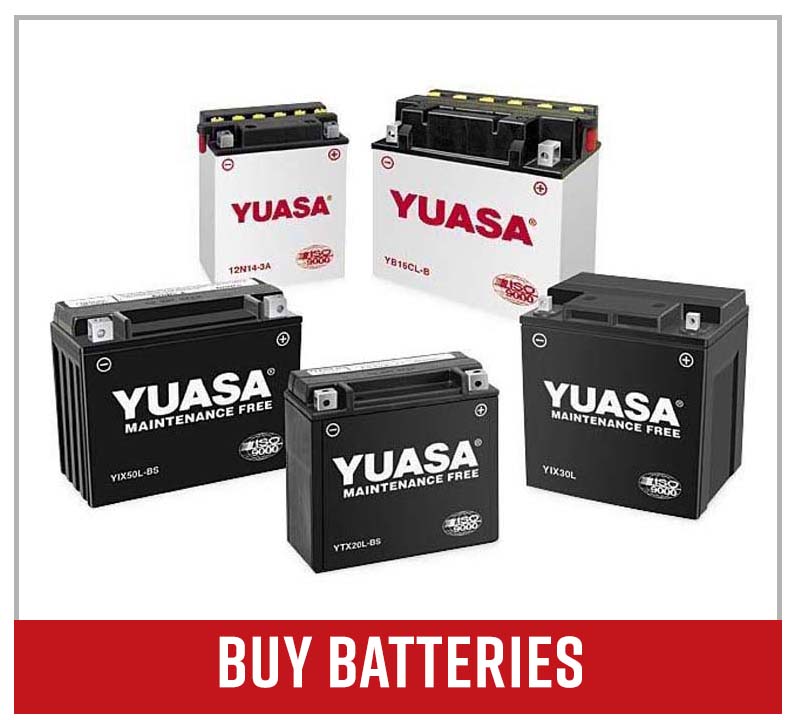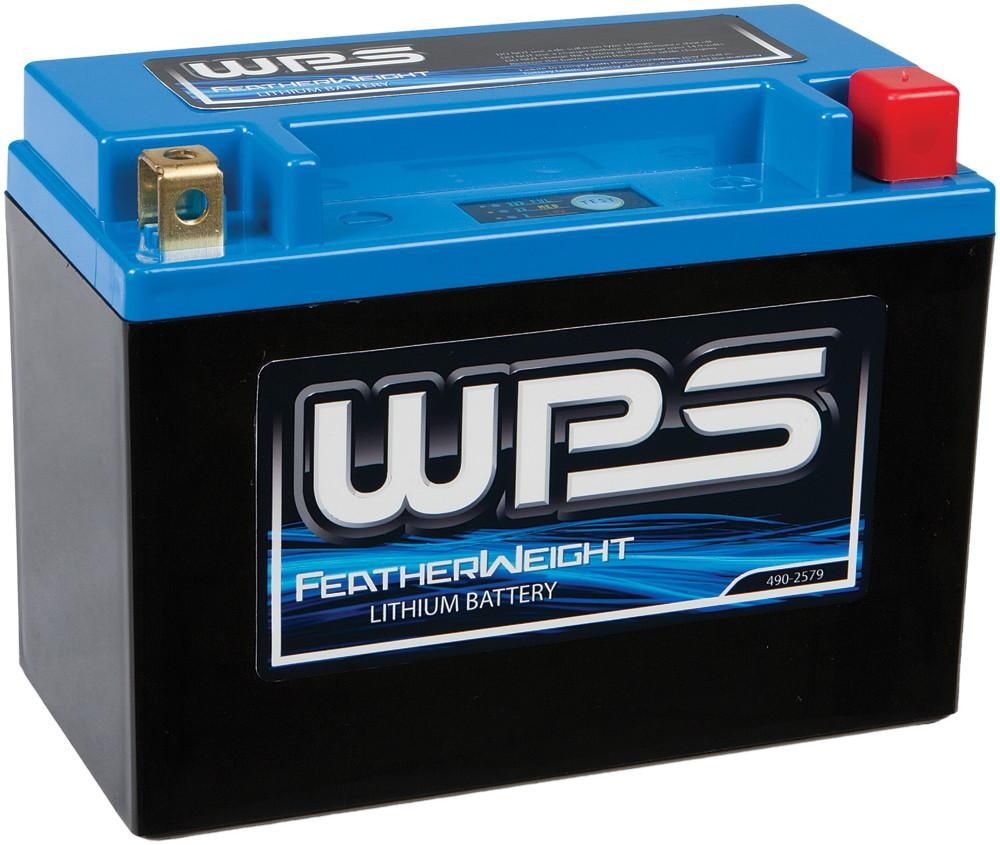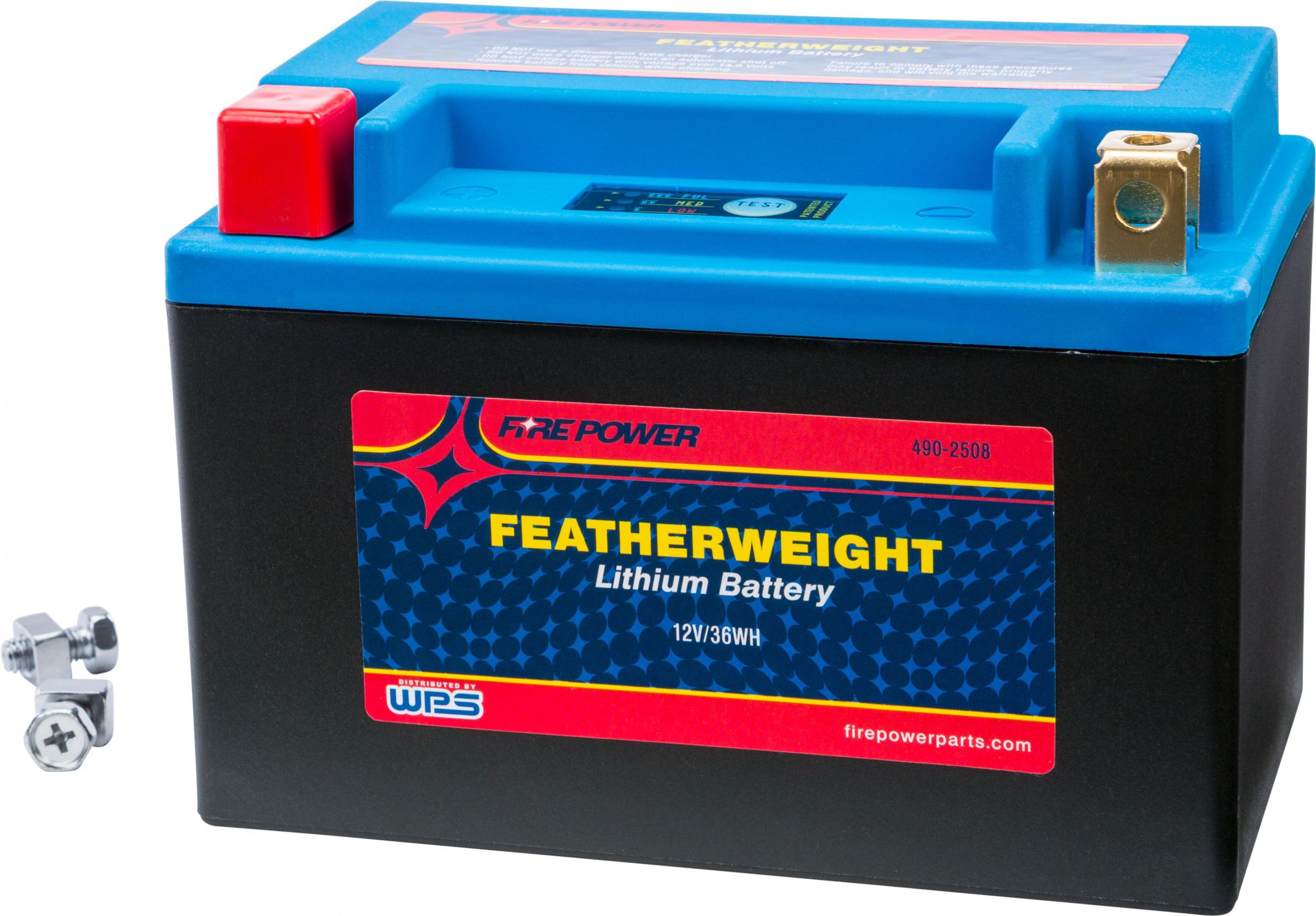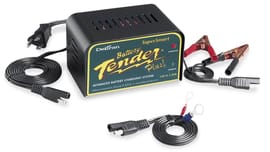Powersports Battery Types: Pros and Cons
Replacing the battery in your motorcycle or ATV is easy enough. However, with so many options to choose from, how do you know which battery type is best for your machine?
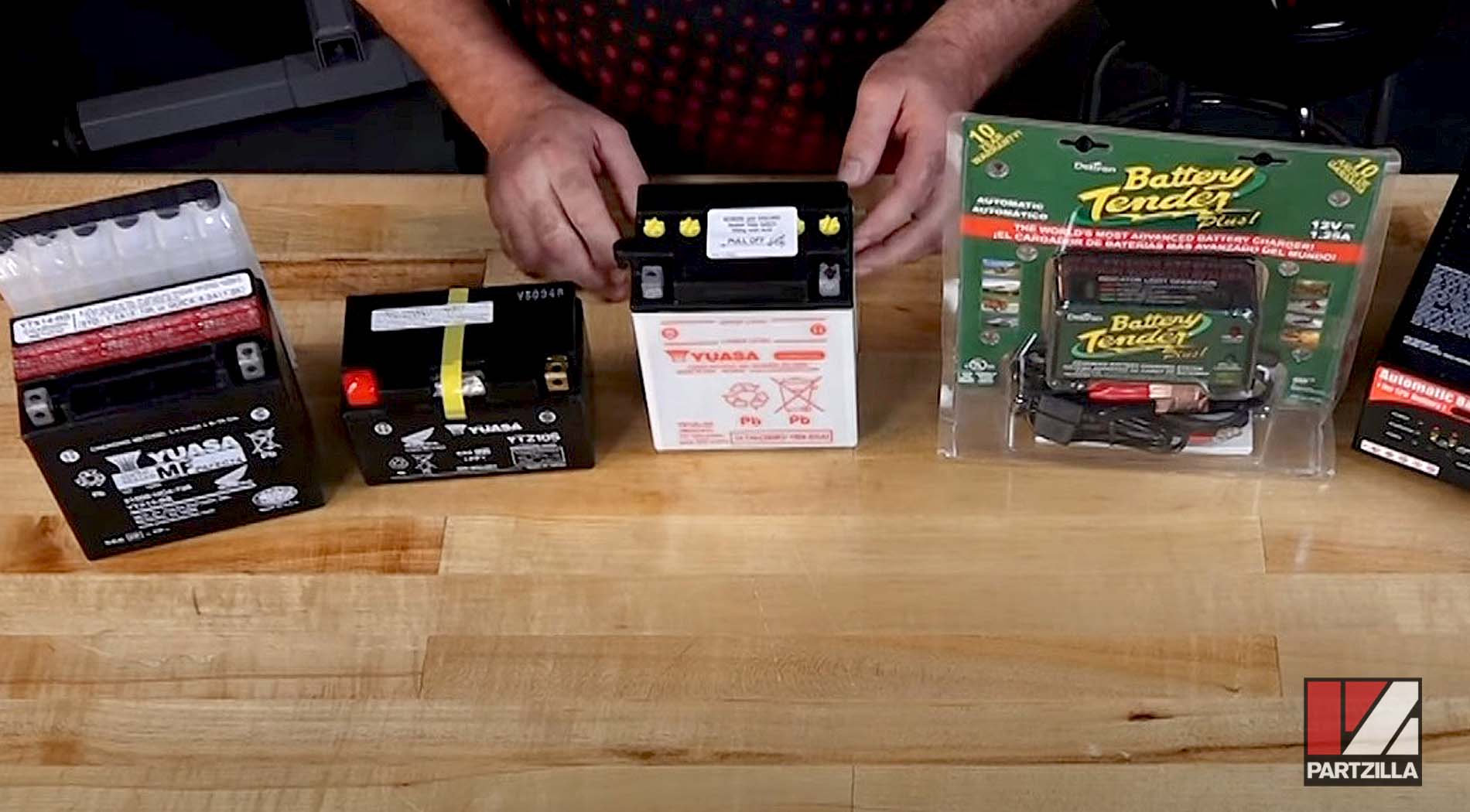
The vast assortment of powersports batteries available can make choosing the most suitable one for your bike or quad a bit confusing. However, you don’t really need to rack your brain trying to figure it out. All you need to focus on when choosing a motorcycle, ATV or UTV battery is two things: type and ratings.
Battery Types
There are three main types of powersports batteries we’ll be focusing on, each with its own pros and cons.
Battery Type 1: Lead Acid Battery
The lead acid battery has been around for more than a century. It consists of a series of cells containing a number of lead plates carrying an electrical charge.

An electrolyte (water and sulfuric acid) is added to each cell, which reacts with the lead plates and generates an electrical charge. Because the electrolyte is a liquid, lead acid batteries are often called wet-cell or flooded-cell batteries.
Pros
- Cheapest in price
- Wide availability
- Reliable
Cons
- Require maintenance
- Large and heavy
- Can leak or spill acid
- Not as efficient in cold weather
- Relatively high self-discharge rate when not in use
Because of their size, weight and the possibility of acid spills, lead acid batteries are best for larger road-based motorcycles, and are not recommended for off-road vehicles.
Battery Type 2: AGM Battery
Absorbent Glass Mat batteries incorporate glass fiber mats between the lead plates within the battery to absorb and store the electrolyte.

AGM batteries either come with a separate electrolyte pack that must be added to activate the battery and then charged before use, or with the electrolyte pre-installed and fully charged from the factory. Once the electrolyte is in, the AGM battery is permanently sealed and the electrolyte never needs to be topped off. This is why AGM batteries are often called maintenance-free batteries.
Pros (vs Lead Acid)
- Smaller and lighter
- No maintenance required
- Won’t spill or leak
- Better at withstanding movement and cold temperatures
- Slower to self-discharge
Cons (vs Lead Acid)
- More expensive
AGM batteries are the most common battery type used in motorcycles and ATVs. Because they’re less prone to degrading when not in use, they’re preferable for vehicles that remain inactive for longer periods. Being sealed and leak-free, AGM batteries are ideal for dirt bikes and ATVs.
Battery Type 3: Lithium-Ion Battery
These batteries outperform AGM batteries in every way. They contain no liquid, and can be mounted in any orientation. Because of their higher level of quality, lithium batteries are also the most expensive.
Pros (vs AGM)
- Very low self-discharge rates: as little as 10% per year if unused
- Significantly smaller, lighter and more durable
- Better at cold cranking
- Recharge faster and hold charge longer
- Less susceptible to temperature changes
- Can be mounted almost anywhere
Cons (vs AGM)
- Can only be recharged with a lithium-ion battery charger
- Discharging below 10% can cause permanent damage
- More expensive
In addition to being more expensive, lithium batteries require special chargers, and may not be compatible with the electrical system (particularly the recharging element) of older bikes and quads.
Battery Ratings
Powersports batteries are measured and rated in cold cranking amps (CCA) and ampere hours (AH). Both indicate how effectively the battery performs, and are essential considerations when shopping for a new battery.
Battery CCA Rating
Cold cranking amps is a measurement of how much power the battery can produce when it’s cold. A battery’s CCA is the amperage (the strength of an electrical current) it provides for 30 seconds at 0° Fahrenheit while maintaining at least 7.2 volts. The CCA rating tells you how the battery performs under load, even at cold temperatures. Knowing the CCA rating of a battery is important, because your vehicle requires a certain number of amps to start the engine. Therefore, the battery’s CCA rating must be greater than the required amperage.
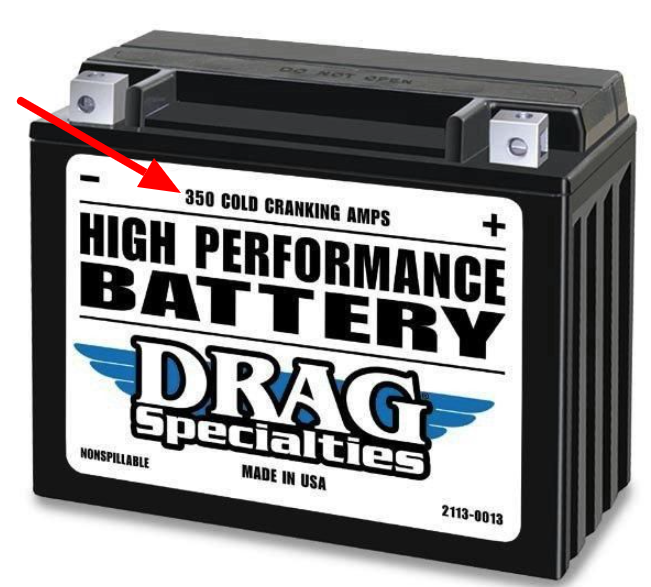
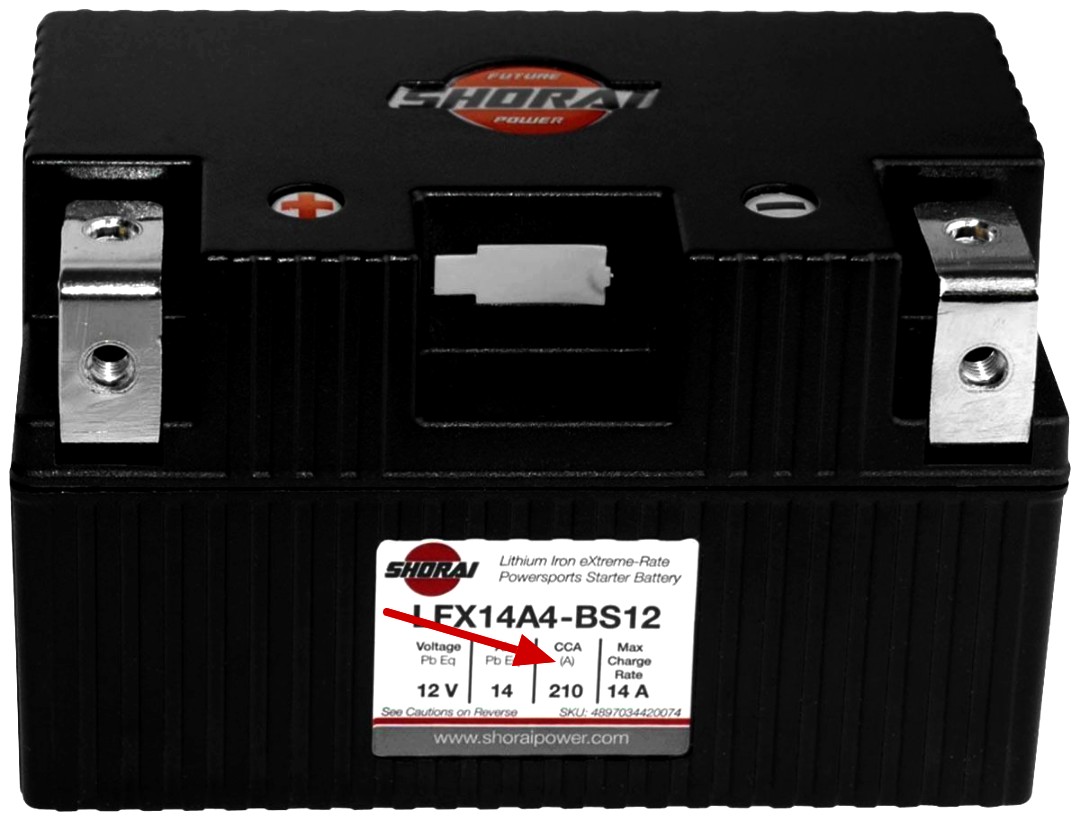
Battery AH Rating
The amp-hour rating is a measurement of the battery’s ability to continue supplying electrical current over a period of time. Simply put, the AH rating is an indication of how long the battery lasts at a constant rate of discharge. The AH rating is calculated by dividing the number of amps the battery is providing by a discharge time of 10 or 20 hours. For example, if a battery can provide 15 amps for 10 hours, it has a 1.5 AH rating (15÷10 = 1.5).

The higher the AH rating, the better, because in colder temperatures, the chemical reaction within a battery slows down and the battery supplies less electrical current. Therefore, a high AH-rated battery retains its performance, even in cold weather.
Now that you know a little more about motorcycle, ATV and UTV battery types, check out Partzilla’s large selection of powersports batteries, and contact us if you have any questions.
